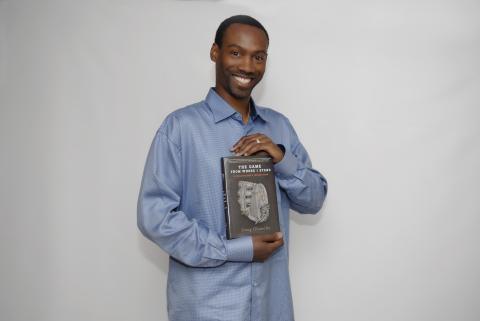The Baseball Tree
December 24, 2013
by Doug Glanville
Christmas is upon us. ‘Tis the season for families to worry about their travel plans over the coming days, and for many baseball players to contemplate their next “permanent” destination. Pitcher and position players who have played the game long enough have earned the right to become free agents and elect where they create their next story. Such freedom makes these players reflect on how it all began, how all their previous choices and opportunities took them to this point in time.
When reflecting, a player realizes that it all began at the base of the baseball tree, under the canopy and shadow of the game’s great history. It’s a place where one cannot get perspective. It is so big, so immediate, that our rookie must start at ground level, searching for understanding, trying to make sense of how this childhood dream could become so promising, yet so daunting.
The wise ballplayer that recognizes the need to grow and gain perspective finds a reservoir of water. On the way to that source, he moves towards the trunk of the tree. He sidesteps the brittle needles for fear that maybe he will get cut by them--even if he understands that these needles have the scent of history that seems to take him to another time, maybe even another life.
Anxious as he may be to begin his climb, the player must first drink in the past. He must understand where he came from. He must remember the path on which he began his walk to get here, the time he played the game before there were such high stakes. He must drink enough now so that he’ll be strong enough to carry history on his back--but not take in so much that he’ll be bloated by illusion.
When the climb begins, the young professional player relies on the hopes and dreams of others. He trusts that fans and teammates, legends, and coaches, will continue to water this tree he is ascending so that it is strong enough to support him. He understands that the higher he gets the more he needs their help. This is a task he cannot complete on his own. To keep climbing, he must continue to look up until he gains enough experience to look back in time, knowing that he can do so and still keep going forward.
The needled branches that obstruct his path are a great unknown. They could be friend or foe. He works to determine their intent, wondering if they will support or distract him. Will this opaque forest of slivers lead him to the top or block him from it?
If he stays focused, the player will see lights, see the ornaments of time illuminating the way. They mark childhood, they mark milestones, they allow him to rest and get perspective to remember why he began this arduous journey. Legacy icons appear: Babe Ruth, Jackie Robinson, his brother or sister, his late father, his first home run, a mom’s kiss. All are encapsulated in these time orbs, reminding him that he is heading in the right direction, even when he can’t see past the next branch.
The lights now guide him. Dramatic and iridescent, they challenge the competitive ballplayer to follow the string, see it through, hoping that the chain never ends. Now he has a companion: faith.
As the climb continues, the player begins to realize that he is getting further from the original water source, from those first coaches and mentors who said the right thing at the right time, who showed him how to steal a base, who taught him how to throw a curveball. He hopes their advice will come full circle, that a new water source will come, that the next ornament on his road will buy him time to sit with his mentor so he can point him up and give him a drink.
But even with the power of having a bird’s eye view of his climb, his advisor can only confirm that this was his dream for him, to tell him that the work he has done to this point was real, that it had impact, that maybe his singular effort gave all these needles the quiet strength they needed to keep the game green and lush, fresh and fragrant and helpful to the next player who will come along needing assistance with navigation.
Soon, as his arms get weary and his legs start to get heavy, the player begins to see more, hoping that having true sight does not cloud his vision for the path that took him into the now thinning branches. He is aging, he knows it by the windows of light that shine through each branch. It is a magnetic feeling, but also a recognition that time has passed. He hopes he served the game well, that he made proud those that gave him enough water and guidance.
And then he makes it to the peak. The star is stunning, everything he hoped it could be. It heats the world, it warms hearts. And he gets it: that seemingly linear path from Little League to the major leagues was strangely as circular and as spherical as the earth itself.
For a moment, he surveys the view from the top of the game and takes in the magnitude and responsibility that comes with what he has done. His journey, he knows, relied on an endless support line of passion, of love, of history, of family.
Our veteran looks up and sees no more terrain, nowhere else to go. He wonders if this great game gave him the power to fly so he can get back on solid ground or even soar to a taller tree to conquer, so he pauses. Then an epiphany, a new wisdom he has attained allows him to now see the gifts that were wrapped at the base of the tree where his trek began, colorfully boxed with bows and ribbons.
He feels a wave of anxiety. For so long, he didn’t think he had anything to give. He was too busy climbing the dream.
A pause, then the anxiety subsides as he realizes his best choice is to climb back down every branch with all the stories and lessons in his backpack. He has come to understand that the greatest gift he can give is in sharing the journey all over again on the way back down, patiently touching everyone who helped him get up to the star in the first place.





